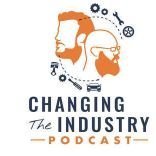When it comes to Part Margins, We are in the wrong business
-
Available Subscriptions
-
Have you checked out Joe's Latest Blog?
-
By Joe Marconi in Joe's Blog0 commentsIt always amazes me when I hear about a technician who quits one repair shop to go work at another shop for less money. I know you have heard of this too, and you’ve probably asked yourself, “Can this be true? And Why?” The answer rests within the culture of the company. More specifically, the boss, manager, or a toxic work environment literally pushed the technician out the door.
While money and benefits tend to attract people to a company, it won’t keep them there. When a technician begins to look over the fence for greener grass, that is usually a sign that something is wrong within the workplace. It also means that his or her heart is probably already gone. If the issue is not resolved, no amount of money will keep that technician for the long term. The heart is always the first to leave. The last thing that leaves is the technician’s toolbox.
Shop owners: Focus more on employee retention than acquisition. This is not to say that you should not be constantly recruiting. You should. What it does means is that once you hire someone, your job isn’t over, that’s when it begins. Get to know your technicians. Build strong relationships. Have frequent one-on-ones. Engage in meaningful conversation. Find what truly motivates your technicians. You may be surprised that while money is a motivator, it’s usually not the prime motivator.
One last thing; the cost of technician turnover can be financially devastating. It also affects shop morale. Do all you can to create a workplace where technicians feel they are respected, recognized, and know that their work contributes to the overall success of the company. This will lead to improved morale and team spirit. Remember, when you see a technician’s toolbox rolling out of the bay on its way to another shop, the heart was most likely gone long before that.
-
-
Similar Topics
-
By Transmission Repair
Premium Member Content
This content is hidden to guests, one of the benefits of a paid membership. Please login or register to view this content.
-
By Changing The Industry
Why Trusting Our Services Makes All the Difference #podcast #autorepairbusiness #automotivebusiness
-
By carmcapriotto
Thanks to our partner, NAPA TRACS
Did you know that NAPA TRACS has onsite training plus six days a week support?
It all starts when a local representative meets with you to learn about your business and how you run it. After all, it's your shop, so it's your choice.
Let us prove to you that Tracs is the single best shop management system in the business. Find NAPA TRACS on the Web at NAPATRACS.com
Thanks to our partner, Promotive
It’s time to hire a superstar for your business; what a grind you have in front of you. Introducing Promotive, a full-service staffing solution for your shop. Promotive has over 40 years of recruiting and automotive experience. If you need qualified technicians and service advisors and want to offload the heavy lifting, visit www.gopromotive.com.
Paar Melis and Associates – Accountants Specializing in Automotive Repair
Visit us Online: www.paarmelis.com
Email Hunt: [email protected]
Download a Copy of My Books Here:
Wrenches to Write-Offs Your Perfect Shop
The Aftermarket Radio Network: https://aftermarketradionetwork.com/
Remarkable Results Radio Podcast with Carm Capriotto: Advancing the Aftermarket by Facilitating Wisdom Through Story Telling and Open Discussion.
Diagnosing the Aftermarket A to Z with Matt Fanslow: From Diagnostics to Metallica and Mental Health, Matt Fanslow is Lifting the Hood on Life.
Business by the Numbers with Hunt Demarest: Understand the Numbers of Your Business with CPA Hunt Demarest.
The Auto Repair Marketing Podcast with Kim and Brian Walker: Marketing Experts Brian & Kim Walker Work with Shop Owners to Take it to the Next Level.
The Weekly Blitz with Chris Cotton: Weekly Inspiration with Business Coach Chris Cotton from AutoFix - Auto Shop Coaching.
Speak Up! Effective Communication with Craig O'Neill: Develop Interpersonal and Professional Communication Skills when Speaking to Audiences of Any Size.
Click to go to the Podcast on Remarkable Results Radio
-
By JustTheBest
Premium Member Content
This content is hidden to guests, one of the benefits of a paid membership. Please login or register to view this content.

-
By carmcapriotto
Thanks to our Partners, AAPEX, NAPA TRACS, and Automotive Management Network Recorded at the 2024 Automotive Aftermarket Retailers of Ontario (AARO) Business Management and Lindertech Training Tradeshow, discover how simply attending meetings can significantly improve net profit, the impact of cost management, and tips on leveraging technology for business efficiency. Murray Voth, RPM Training. Listen to Murray’s previous episodes HERE. [email protected] Show Notes Watch Full Video Episode Automotive Aftermarket Retailers of Ontario (AARO): https://www.aaro.ca/ Importance of Attendance (00:02:04) Discussion on how missing educational events can lead to lost opportunities and profits. Value of Showing Up (00:03:05) Murray emphasizes the connection between attendance and improved business performance. Networking and Community (00:04:39) The significance of in-person meetings for building relationships and sharing knowledge. Learning from Group Sessions (00:05:23) Murray shares insights on the benefits of participating in group coaching sessions. Addressing Intimidation in Coaching (00:07:50) Discussion on how some individuals feel intimidated and hesitant to participate in coaching. The Need for Continuous Learning (00:10:59) Carm stresses the importance of seeking expert guidance and accountability in business. Coaching Styles and Techniques (00:11:53) Murray contrasts different coaching approaches and their effectiveness in the industry. Utilizing Technology for Coaching (00:13:28) Murray discusses the transition to online coaching and the importance of Google Business Profile. Engagement in Virtual Meetings (00:14:17) The effectiveness of screen sharing and virtual meetings in enhancing learning experiences. Introduction to Collaboration Tools (00:15:54) Discussion on using screen sharing and collaboration tools for knowledge sharing among automotive shop owners. Resources for Business Improvement (00:18:58) Introduction to automotive management network resources such as SOPs and checklists for business advancement. Note-Taking and Organization (00:20:00) Personal experiences with note-taking and strategies for managing notes effectively in a business context. Using Google Docs for Accountability (00:23:22) How Google Docs can facilitate accountability by allowing team members to log and review action plans collaboratively. Networking and Community Support (00:27:02) Encouragement for members to utilize networking tools like Slack for better communication and support among peers. Understanding Employment Law (00:30:33) Insights into Canadian employment law regarding severance and the importance of having employment contracts to protect business owners. Understanding Severance Costs (00:32:12) Discussion on the financial impact of severance costs and the importance of understanding net income. Calculating Impact on Sales (00:33:13) Exploration of how to calculate necessary sales to cover losses in the automotive industry. Networking and Sharing Solutions (00:34:11) Importance of sharing experiences and solutions among peers in overcoming business challenges. Expense Management Insights (00:35:09) Discussion on the need for better focus on expense management in business operations. Insurance and Expense Comparisons (00:36:02) Sharing strategies for managing insurance and other recurring expenses effectively. Planning Expense Discussions (00:37:35) Proposal to plan discussions on key expenses in future meetings for better financial management. Setting Budgets and KPIs (00:38:27) Discussion on the importance of setting budgets and KPIs for various business expenses. Normalizing Income Statements (00:39:18) Explanation of how to clean up income statements for accurate financial analysis.
Thanks to our Partners, AAPEX, NAPA TRACS, and Automotive Management Network Set your sights on Las Vegas in 2024. Mark your calendar now … November 5th-7th, 2024. AAPEX - Now more than ever. And don’t miss the next free AAPEX webinar. Register now at http://AAPEXSHOW.COM/WEBINAR NAPA TRACS will move your shop into the SMS fast lane with onsite training and six days a week of support and local representation. Find NAPA TRACS on the Web at http://napatracs.com/ Get ready to grow your business with the Automotive Management Network: Find on the Web at http://AftermarketManagementNetwork.com for information that can help you move your business ahead and for the free and informative http://LaborRateTracker.com Connect with the Podcast: -The Aftermarket Radio Network: https://aftermarketradionetwork.com -Follow on Facebook: https://www.facebook.com/RemarkableResultsRadioPodcast/ -Join Our Private Facebook Community: https://www.facebook.com/groups/1734687266778976 -Join Our Virtual Toastmasters Club: https://remarkableresults.biz/toastmasters -Subscribe on YouTube: https://www.youtube.com/carmcapriotto -Follow on LinkedIn: https://www.linkedin.com/in/carmcapriotto/ -Follow on Instagram: https://www.instagram.com/remarkableresultsradiopodcast/ -Follow on X: https://twitter.com/RResultsBiz -Visit the Website: https://remarkableresults.biz/ -Join our Insider List: https://remarkableresults.biz/insider -All books mentioned on our podcasts: https://remarkableresults.biz/books -Our Classroom page for personal or team learning: https://remarkableresults.biz/classroom -Buy Me a Coffee: https://www.buymeacoffee.com/carm -Special episode collections: https://remarkableresults.biz/collections Click to go to the Podcast on Remarkable Results Radio
-
-
-
Our Sponsors


















Recommended Posts
Create an account or sign in to comment
You need to be a member in order to leave a comment
Create an account
Sign up for a new account in our community. It's easy!
Register a new accountSign in
Already have an account? Sign in here.
Sign In Now